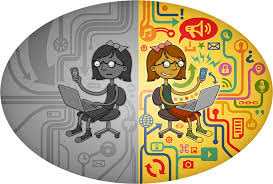Digital divide
The Digital Divide, or the digital split, is a social issue referring to the differing amount of information between those who have access to the Internet (specially broadband access) and those who do not have access. The term became popular among concerned parties, such as scholars, policy makers, and advocacy groups, in the late 1990s
Dimensions of the Divide
Broadly speaking, the difference is not necessarily determined by the access to the Internet, but by access to ICT (Information and Communications Technologies) and to Media that the different segments of society can use. With regards to the Internet, the access is only one aspect, other factors such as the quality of connection and related services should be considered. Today the most discussed issue is the availability of the access at an affordable cost and quality.
The problem is often discussed in an international context, indicating certain countries are far more equipped than other developing countries to exploit the benefits from the rapidly expanding Internet. Here is the latest State of the Internet Report from Akamai, showing average and maximum connection speeds, Internet Penetration and Broadband adaption, Mobile usage, as well as trends in this data over time.
The digital divide is not indeed a clear single gap which divides a society into two groups. Researchers report that disadvantage can take such forms as lower-performance computers, lower-quality or high price connections (i.e. narrowband or dialup connection), difficulty of obtaining technical assistance, and lower access to subscription-based contents.

Comments
Post a Comment